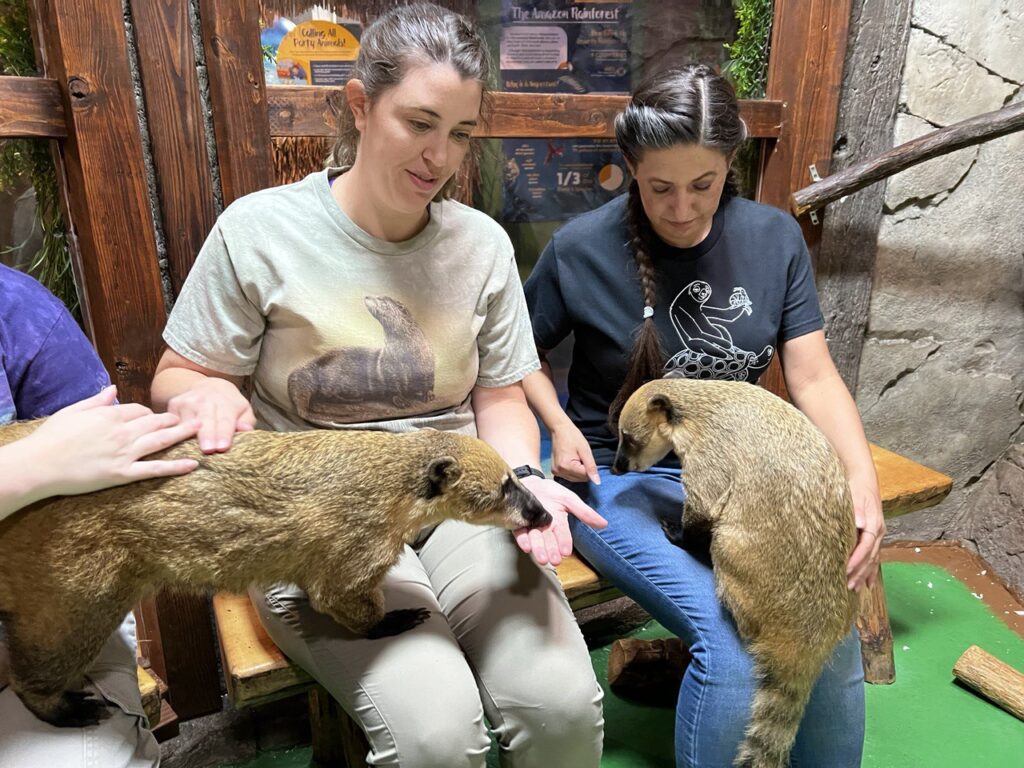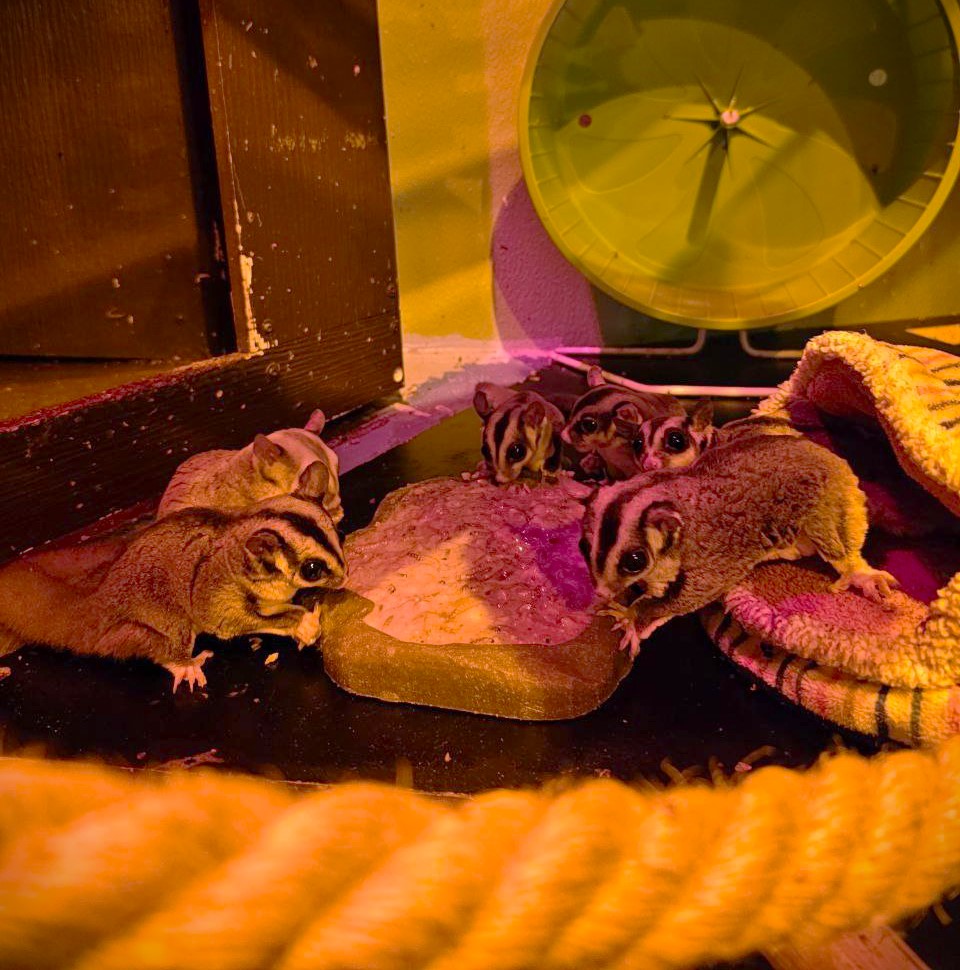SeaQuest’s Comprehensive Guide to Deforestation
Share it on:

Forests are crucial to the balance of the global environment. They provide vast wildlife habitats while being the world’s largest carbon consumers on land. However, over the last three decades, 43% of countries saw a net reduction in their forest area, while only 38% gained forest area and 19% had no overall change. So since 1990, the world has lost more than 4% of its total forest area or 685,300 square miles of forest area, and more than half the world’s tropical forests have been destroyed since the 1960s.
What is Deforestation?
Deforestation occurs when forests are converted to non-forest uses, such as agriculture and road construction. Forest degradation occurs when forest ecosystems lose their capacity to provide important goods and services to people and nature. Deforestation can also be seen as the removal of forests leading to several imbalances ecologically and environmentally and resulting in declines in habitat and biodiversity.
Over 80% of the world’s terrestrial biodiversity can be found in forests from pine trees in the boreal North to the rainforests in the tropics. The degradation and loss of forests threaten the survival of many species and reduce the ability of forests to provide essential services such as clean air and water, healthy soils for agriculture, and climate regulation.
The trees of all forests, like all green plants, take up carbon dioxide from the atmosphere and release oxygen during photosynthesis. They also carry out the opposite process, known as respiration, but when forests are growing, photosynthesis exceeds respiration, and the surplus carbon is stored in tree trunks and roots and in the soil. This is called “sequestration.”
When forests are cut down, much of that stored carbon is released into the atmosphere again as CO2. This is how deforestation and forest degradation contribute to global warming.
What Causes Deforestation
Forests are cleared to make way for any of a long list of agricultural products and other human activities. One cause of deforestation to consider can be summarized briefly by the need for food, fuel, shelter, and foreign goods exchange. The problems of converting forest areas for agriculture, fuelwood, and industrial logging are clues to more fundamental factors: Issues of increased population pressure along with a shortage of resources and space for growth. But most of the tropical deforestation occurring today can be traced to just four globally traded commodities: beef, soybeans, palm oil, and wood products.
Population Growth and Resource Demand
There is not much that can be done to slow the global population growth for the next 50 years. It’s estimated that 12 billion people will inhabit the earth by the year 2075. Because of this boom in population annual global wood needs are expected to double to just over 3 billion cubic meters. Demand for (tree) pulp is expected to increase from 265 million cubic meters to over 1000 million cubic meters.
Commercial Agriculture
Cattle Ranching, soy cultivation, and oil palm plantations contribute to 40% of deforestation worldwide. Mining, infrastructure, and urbanization are also key culprits. Cattle ranching contributes 80% of deforestation in the Amazon rainforest.
The Logging Industry
Industrial wood products account for 20% of the total volume removed from tropical forests. While logging does not account for most of the global deforestation, in certain areas like the Amazon rainforest, it is the principal cause. From the early 1950s to the mid-70s, there was a significant increase in the exporting of tropical hardwoods. Imports are expected to be 95 million cubic meters by the year 2000.
The process of industrial logging is highly selective, with only select tree species harvested. Logging operations can leave up to 65% percent of the residual trees damaged beyond recovery, as some trees become damaged and are then vulnerable to deadly pathogens that can kill them. Logging roads destroy 10 to 30% percent of the forest area. This makes it difficult for forest trees to regenerate easily and regrowth is nearly impossible.
Paper Production
In the mid 20th century, worldwide consumption of paper products increased from 40 to 130 million tons. Today, most developed countries use 160 million tons of pulp a year. About 7% percent of the world’s pulp needs come from tropical forests. Paper waste is at a dangerous level. If the U.S. recycled just 20% of the 46 million tons of wastepaper it discards each year, no tropical rainforest would have to be converted for paper pulp.
Negative Effects of Deforestation
Forests are vital to human existence in the tropics. In addition to providing habitats for hundreds of indigenous groups on five continents, they probably contain more than 3 million species of plants and animals. Deforestation affects animals in many ways. It causes habitat destruction, increased risk of predation, reduced food availability, and much more. As a result, some animals lose their homes and food sources. In fact, deforestation is one of the main causes of extinction.
Deforestation in Brazil and The Amazon
The Amazon rainforest spans over nine countries and is approximately 3.2 million square miles. It holds 1/5 of the world’s forest and 1/3 of the earth’s species. The continent’s rainforest holds a staggering 48 billion tons of CO2. The Amazon rainforest is considered the most biodiverse on earth, and it is the forest that has one of the highest rates of deforestation.
60% of the Amazon rainforest is located in Brazil, and it plays a vital role in absorbing harmful CO2 that would otherwise escape into the atmosphere. After falling steadily since 2004, deforestation in Brazil’s Amazon has risen again. 20% of the Brazilian Amazon has been cleared out by deforestation. Many rainforest mammals, like the two-toed sloth and the kinkajou, rely on old-growth trees to find food and avoid predators. The rapid deforestation in the vast area puts many animals at risk to reach an endangered level, if not extinct.
Deforestation in Africa
Africa’s tropical forests, which include the Congo Basin, are under constant threat. The continent’s forests store 171 gigatons of CO2 and are home to many plants and animals that exist nowhere else in the world. These forests support an estimated 100 million people. In the last 100 years, West Africa has lost about 90% of forest coverage. One factor contributing to the continent’s high rates of deforestation is the dependence its population has on wood as fuel for heating and cooking.
Deforestation in Asia
Southeast Asia is home to nearly 15% of the world’s tropical forests. Southeast Asia has lost 82,000 square kilometers, or 31,700 square miles, of forest to croplands and agriculture use between 2000 and 2014. It has also lost more than half of its original forest cover, which caused severe biodiversity loss crises. It’s estimated that over 40% of the region’s biodiversity will be extinct or completely disappear by 2100. 84% of global palm oil production occurs in Indonesia and Malaysia, making palm oil the major cause of deforestation in Southeast Asia. One animal significantly affected by deforestation is the Asian small-clawed otter. These otters have been run-out of their natural habitats in India and Southeast Asia, making them currently threatened on the IUCN (International Union for Conservation of Nature) list of endangered species.
How you can help prevent Deforestation
Ending deforestation and restoring forests have other benefits beyond reducing global warming pollution. Tropical forests are home to many unique species of animals and plants that risk extinction if we do not protect their habitat. Tropical forests help regulate regional rainfall and prevent both floods and droughts. Reducing deforestation is not only a crucial action against global warming, it can also contribute to saving biodiversity and support sustainable development.
There are a number of movements and organizations in which people regularly participate in activities to create more political action on climate change and protection. Take a stand for the climate today!
Recycle, Recycle, Recycle!
Yes, it’s hard to know what really is recyclable these days. But recycling remains an effective and important way to reduce your carbon footprint. Recycled aluminum products use 95 percent less energy than creating new ones. About 50% of recycled materials come from households; if that number were to increase to 65%, at-home recycling could prevent 2.8 gigatons of carbon emissions. However, recycling wrong can slow the system and create more waste, so be sure to rinse out your recyclables and stay up to date on local regulations to make sure what you recycle isn’t causing contamination.
Plant Trees
When it comes to helping prevent deforestation, trees are the real, solid way to help the planet. Planting trees has consistently ranked as the #1 climate change solution. You can also turn your yard or balcony into a pollinator oasis! Support your local environment by planting native, pollinator-friendly flowers and herbs either in containers on your balcony or directly in the ground in your backyard!
You are already on a fast track to helping fight climate change in 2022 and beyond! Conducting simple research and staying informed on the latest environmental news and updates, will offer a variety of steps to take to protect the climate and environment will ensure you are doing your part to make the world a better, and more sustainable place, for years to come!
SeaQuest is committed to protecting our world forests and educating guests on how to be proactive in finding solutions. To learn more about how you can help SeaQuest with this cause, book your visit today at any of the following locations: Utah, Las Vegas, Dallas-Fort Worth, Denver, Sacramento, Minneapolis, Connecticut, Lynchburg, New Jersey, and Atlanta.




